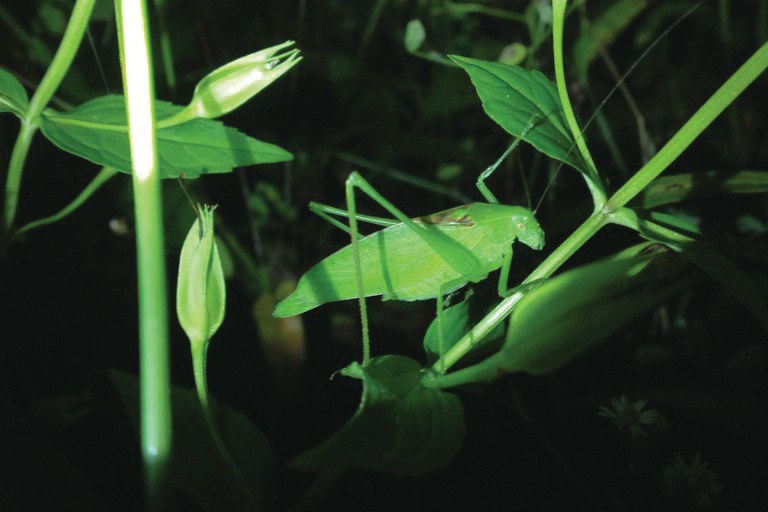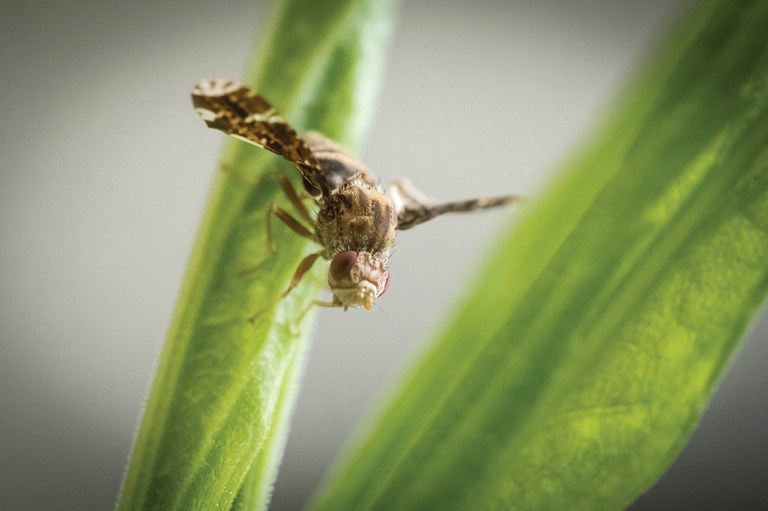Posted: April 19, 2021
Spy Versus Spy
Over time goldenrod plants and the gall flies that feed on them have been one-upping each other in an ongoing competition for survival. Now, a team of researchers has discovered that by detecting the plants' chemical defenses, the insects may have taken the lead.
According to John Tooker, professor of entomology, this complex scenario begins when a female gall fly lays its eggs in the leaf bud of a goldenrod plant. This action forces the plant to produce a tumorlike growth, called a gall. This gall, he said, provides the fly larvae with a source of nutrition and safety from predators and the environment but decreases the plant's ability to reproduce.
"Our previous research showed that goldenrod plants have evolved to 'eavesdrop' on the sexual communications of their gall fly herbivores--specifically, the sex pheromones used by males to attract females," he said. "Our new research suggests that the plants respond to this 'intelligence' by strengthening chemical defenses to prevent females from laying eggs and inducing gall formation."
Eric Yip, postdoctoral scholar in entomology, explained that this plant-insect dynamic is similar to the reversals of fortune that occur in the Spy vs. Spy comic strip, only the characters are a plant and an insect rather than a pair of cartoon drawings. The team published its findings in the Journal of Ecology.
--Sara LaJeunesse
Singing in the Suburbs
The songs that crickets and katydids sing at night to attract mates can help in monitoring populations of these threatened insect species and shed light on their habitat preferences, say college researchers. Their study, published in the Journal of Insect Conservation, was the first to show that the use of aural point count surveys--a method commonly used by wildlife biologists to study birds and other vertebrates by listening to their songs--can be effective in exploring the population dynamics of night-singing insect species.

Rattler Round-winged Katydid. Photo: Penn State
"We were surprised to find more species in suburban areas than in either urban or rural areas, perhaps because areas with intermediate levels of disturbance host the greatest number of habitat niches and can support more species than heavily disturbed or totally undisturbed ecosystems," said the study's lead researcher, D. J. McNeil, postdoctoral fellow in the Insect Biodiversity Center.
--Chuck Gill
Features
Fostering Forests
Across the United States, forests face unprecedented threats, and scientists in Penn State's College of Agricultural Sciences are conducting novel and complex research to conserve them.
Buzzing With Purpose
Community scientists work to protect Pennsylvania's wild bees
Conservation Reimagined
Exploring new approaches to cope with a changing climate



